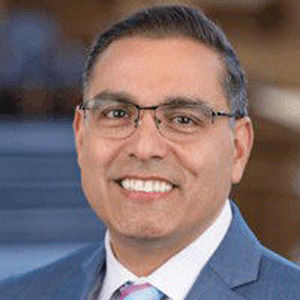Powerful Passover seder connects us with our ancestors
Published April 11, 2019
Without question, the night of the Passover seder is among the most powerful experiences of the entire year. We daven, sing, eat, discuss, debate and methodically make our way through the Haggadah and a long night filled with rituals, customs and practices — some ancient and some new — in an attempt to experience the notions of Cherut (freedom and liberation) and B’chol dor va’dor (anew in each era and generation).
For me, one of the most poignant moments of the seder is the section called Yachatz, the conscious breaking of the middle of the three seder matzot into two distinct sections. The smaller piece is kept alongside the two remaining complete matzot, while the larger section is hidden away and eaten at the conclusion of the part of the Seder that we refer to as Tzafun, meaning “the hidden.”
This little piece of coveted unleavened bread is called the Afikoman (dessert in Greek) and is generally accompanied by a variation of the game hide and seek. It ultimately concludes with gifts for the youngest gleeful participants in our Pesach rite.
ADVERTISEMENT
Recently, I heard a beautiful interpretation of the Afikoman that I hope will make its way from the pages of this publication to your seder tables.
The two pieces of the middle matzah represent two entirely different worlds. The smaller piece is called LeChem oni (the bread of affliction) and represents Olam hazeh — the everyday, ordinary world that we inhabit. This world has its ups and downs, sickness and health, flaws and imperfections, moments of elation as well as moments of abject sadness.
Al HaSovah, the bigger piece, however, is enigmatically and ironically prescribed to be consumed only after we have eaten and are sated. It represents Olam HaBah (the world to come) and is called Afikoman (the dessert). This next reality has a place reserved in it — if earned — for each and every one of us. However, this eternal, bigger reward is accessible only after one has lived a life filled with worthy tasks and productive behaviors.
ADVERTISEMENT
And that is why we eat it only after we are full. The life we create for ourselves can be wonderful. But if lived in consonance with the ways of the Divine, the good life we now enjoy will be greatly enhanced by the goodness and sweetness we will merit in the next reality. Like the larger section of the middle matzah, which becomes our dessert, more is initially hidden than revealed. But, eventually, our reward will become apparent and we will reap the manifold and elevated rewards of a life lived well, many times over.
Passover, more so than any other holy day, has curative and redemptive qualities to it. It reminds us, in a myriad of fascinating and often obfuscated ways, that exile and distancing from Godliness and Holiness are only temporary states of being. It proves to us that by celebrating in the same spirit and with the same consciousness that our ancestors have for centuries, we, too, can be redeemed from the Mitzrayims (the Egypts), the limiting narrow places that constrict and restrain us.
Pesach, celebrated BaChatzi HaLilah, in the “dead of night,” reminds us that there eventually again will be daylight. And, in the final analysis, we will again feel, like with the rising of the new day’s sun, the warmth, luminosity, comfort, healing and wholeness that the Holy One of Blessing intends for us all!
With blessings for a Geulah Shleimah, a full and everlasting time of redemption, catalyzed by a transformative Pesach experience. Amen!
Rabbi Carnie Shalom Rose is the Rabbi Bernard Lipnick Senior Rabbinic Chair at Congregation B’nai Amoona.
















